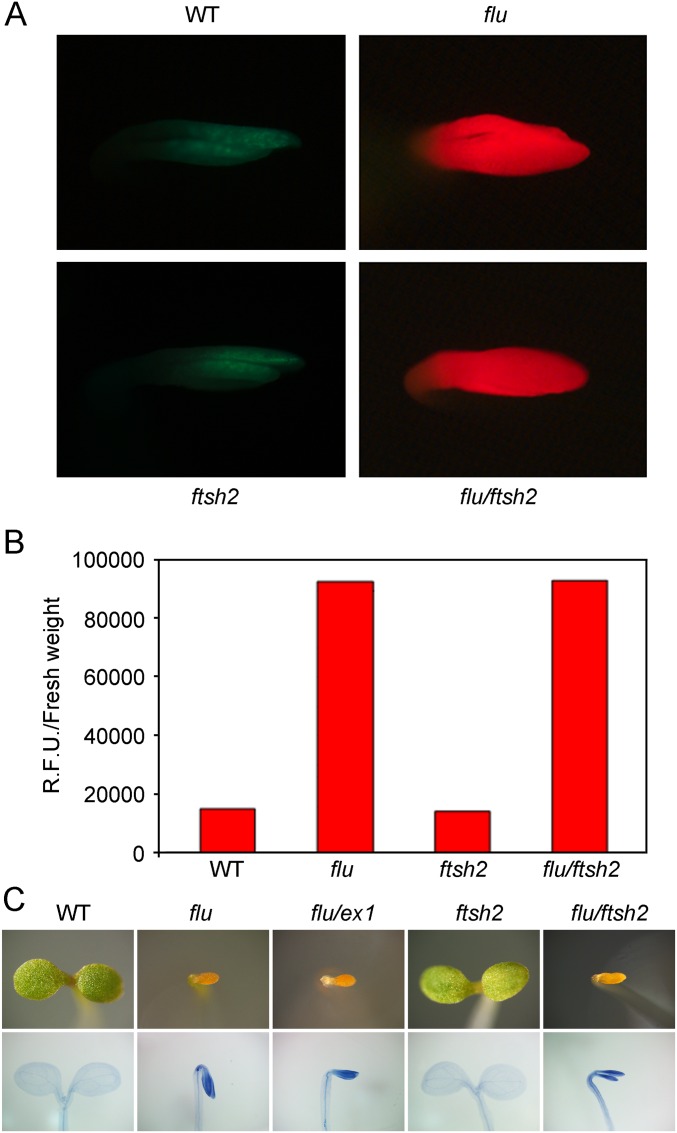Fig. S4.
Overaccumulation of Pchlide and 1O2-mediated cell death in flu and flu/ftsh2 seedlings grown in the dark for 4 d. WT, flu/ex1, and ftsh2 seedlings were used as controls. (A) Four-day-old seedlings grown in the dark (etiolated seedlings) were exposed to blue light (400–450 nm), and the emitted fluorescence was recorded (2). The bright red fluorescence emitted by flu and flu/ftsh2 is caused by the excitation of free Pchlide. (B) Tetrapyrroles were extracted from etiolated seedlings and separated by HPLC, and the relative amounts of Pchlide were determined by their fluorescence. (C) Pictures of etiolated seedlings that were transferred to light for 48 h (Upper). Singlet oxygen-mediated cell death in these seedlings was revealed by trypan blue staining (Lower). In etiolated flu seedlings transferred to the light, 1O2-mediated cell death does not depend on EX1 and happens in both flu and flu/ex1 (26). Similarly treated flu/ftsh2 seedlings respond in the same way. In all three lines with a flu mutation, Pchlide acts as a photosensitizer and generates 1O2 that triggers the same death response. Thus, the photosensitizing activity of Pchlide and generation of 1O2 seem not to be affected by the ftsh2 mutation.

